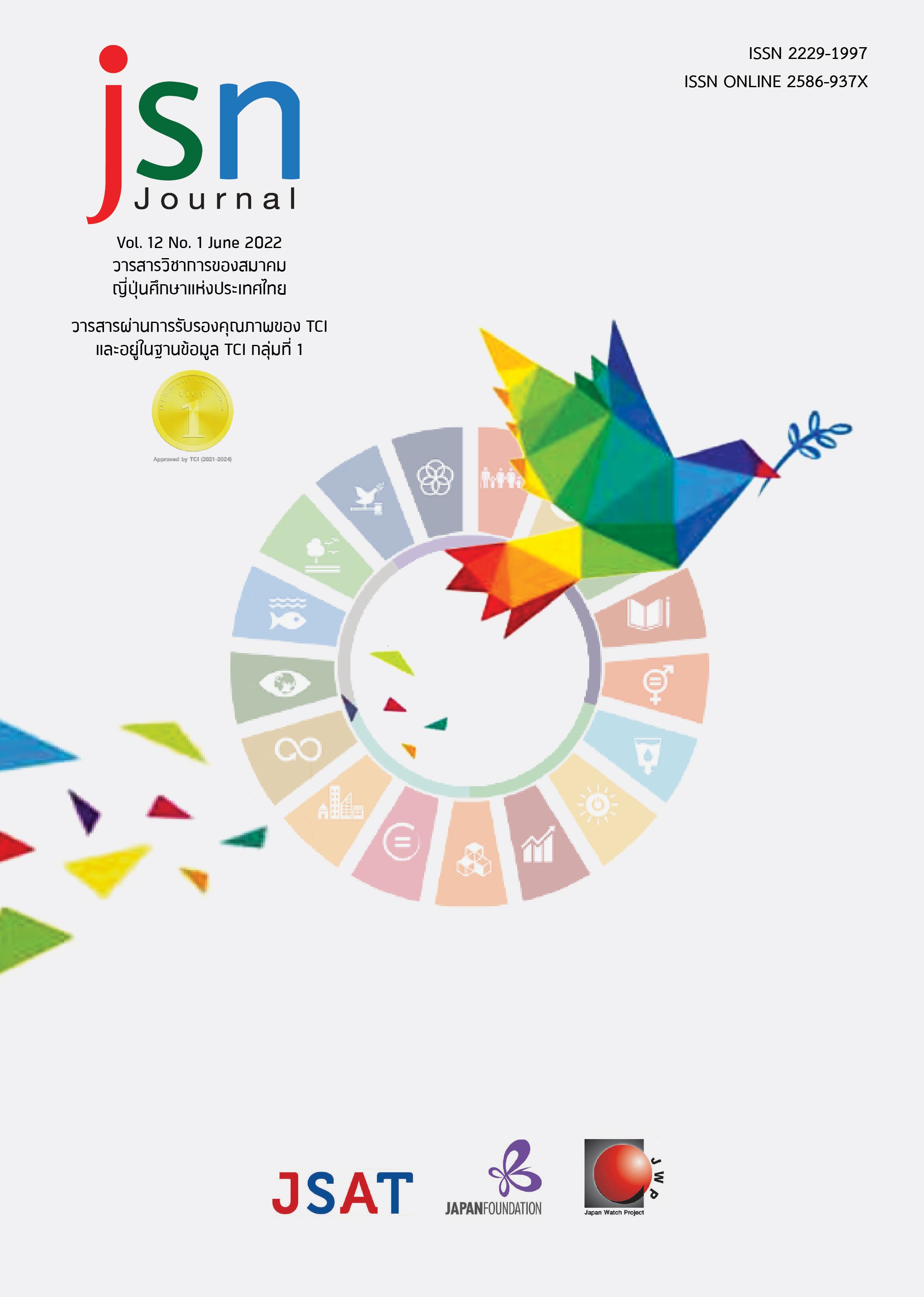The Usage of Japanese “Use” (tsukau, mochiiru, shiyōsuru, riyōsuru) A Case Study by an Online Data Retrieval Engine NINJAL-LWP for TWC
Main Article Content
Abstract
The present study aimed to study the usage of “use” in Japanese: tsukau, mochiiru, shiyōsuru, and riyōsuru by an online data retrieval engine NINJAL-LWP for TWC of University of Tsukuba. The results revealed that tsukau has the meanings covering over three near-synonymous verbs: mochiiru, shiyōsuru, and riyōsuru. The collocational nouns occurring with tsukau can be categorized by meanings into 8 groups. The Sino-Japanese verbs, shiyōsuru and riyōsuru, have narrower meanings than does the Native Japanese word (tsukau). There are two and four collocational nouns occurring with shiyōsuru and riyōsuru respectively. There is no difference on mochiiru and tsukau in the aspect of collocations, but there is difference in terms of the language usage in a formal level for mochiiru.
Article Details

This work is licensed under a Creative Commons Attribution-NonCommercial-NoDerivatives 4.0 International License.
ข้อความและข้อคิดเห็นต่างๆ ในบทความเป็นของผู้เขียนบทความนั้นๆ ไม่ใช่ความเห็นของกองบรรณาธิการหรือของวารสาร jsn Journal
References
พจนานุกรมฉบับราชบัณฑิตยสถาน พ.ศ. 2554. (2556, พิมพ์ครั้งที่ 2). กรุงเทพฯ: ราชบัณฑิตยสถาน
มาซาโยชิ ฮิโรเซะ. (2543, พิมพ์ครั้งที่ 3). พจนานุกรมการใช้คำภาษาญี่ปุ่น [Effective Japanese Usage Guide] (ปราณี จงสุจริตธรรม, แปล). กรุงเทพฯ: โรงเรียนสมาคมส่งเสริมเทคโนโลยี (ไทย-ญี่ปุ่น).
Backhouse, A. E. (2003). Collocational aspects of near-synonyms: Illustrations from a small corpus. Journal of International Student Center, Hokkaido University, (7), 50-68.
Edmonds, P & Hirst, G. (2002). Near-synonymy and lexical choice. Computational Linguistics, 28(2), 105-144.
赤瀬川史郎・プラシャント パルデシ・今井新悟. (2016). 『日本語コーパス活用入門』東京: 大修館書店.
国広哲弥. (2002).「類義語・対義語の構造」『現代日本語講座第4巻語彙』, 152-171. 東京: 明治書院.
国立国語研究所. (1965).『類義語の研究』東京 : 国立国語研究所. doi.org/10.15084/00001239
広辞苑 (第6版). (2008). 東京: 岩波書店.
佐藤政光. (1999)「日本語学習者の語彙習得に関する調査研究―(1) 基本語彙の問題 点 について」『明治大学人文科学研究所紀要』44, 169-180. http://hdl.handle.net/10291/4086
柴宝華・趙海城. (2017).「コーパスに基づいた類義語分析 ――「見落とす」「見過ごす」「見逃す」を例に――明星大学研究紀要-人文学部』(53), 27-46.
立山智絵. (2012). 「類義語研究—「結果」と「成果」—」『東京女子大学日本文学』(109), 111-126.
友繁義典 (2016). 「英語シノニム考―英和辞典においてどのようなシノニムのどのような情報が必要か―」 研究報告』18, 77-87.
日本語教育学会編. (2000).『日本語教育事典(縮刷版)』東京: 大修館書店.
宮島達夫. (1980).「意味分野と語種」『研究報告集』2, 1-16. doi/10.15084/00001068
三輪真之. (2001). 建築関連語の語種による語感の相違に関する研究」 日本建築学会計画 系論 文 集』544, 157-162.
คลังข้อมูลภาษา
国立国語研究所.『現代日本語書き言葉均衡コーパス』(BCCWJ:Balanced Corpus of Contemporary Written Japanese) Retrieved from https://shonagon.ninjal.ac.jp/
筑波大学・国立国語研究所・Lago言語研究所『NINJAL-LWP for TWC』Retrieved from https://tsukubawebcorpus.jp
藤村逸子・大曽美恵子・大島ディヴィッド義和. (2011)「会話コーパスの構築によるコミュニケーション研究」藤村逸子、滝沢直宏編『言語研究の技法:データの収集と分析』43-72東京: ひつじ書房 (名大会話コーパス).


